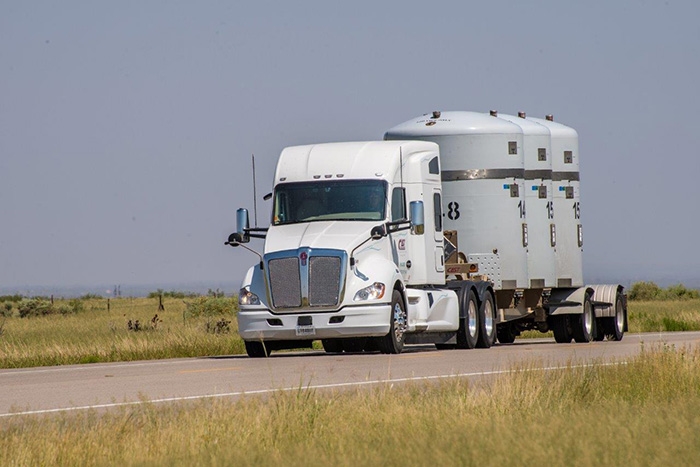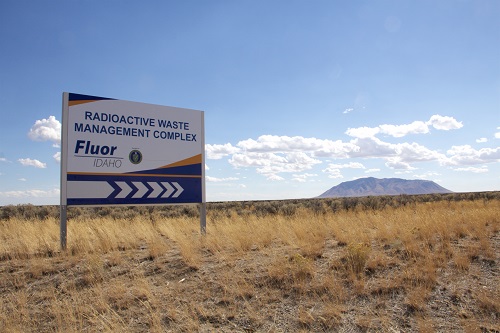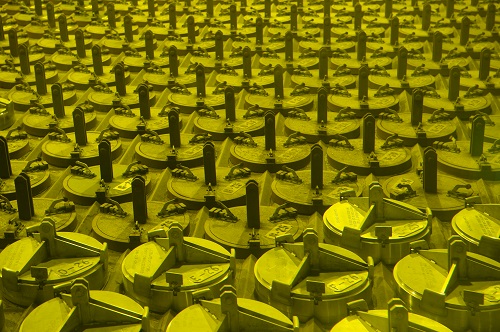Federal officials are looking to ship some 3 million gallons of radioactive waste from Washington state to New Mexico, giving the government more flexibility to deal with leaking tanks at Hanford Nuclear Reservation…The Department of Energy said its preferred plan would ultimately dispose of the waste in a massive repository – called the Waste Isolation Pilot Plant – near Carlsbad, N.M, where radioactive materials are buried in rooms excavated in vast salt beds nearly a half-mile underground.
The federal proposal was quickly met with criticism from a New Mexico environmental group that said the state permit allowing the government to bury waste at the plant would not allow for shipments from Hanford, the nation’s most contaminated nuclear site. Sen. Tom Udall, D-N.M., said WIPP specifically prohibits waste from Hanford and any proposal to modify permit language in this case would need “strong justification and public input.” “WIPP has demonstrated success in its handling of defense TRU waste,” Udall said in a statement. “With regard to Hanford waste, I urge all parties involved to exhibit caution and scientific integrity to ensure that DOE is abiding by the law and that the waste classifications are justified.” The waste near Carlsbad includes such things as clothing, tools and other debris.
The transfer from Washington would target so-called transuranic waste, which is less radioactive than some of the sludge at Hanford, and accounts for a fraction of the roughly 50 million gallons of waste there currently. Federal officials have identified six leaking tanks, and five of the leakers contain transuranic waste, said Tom Fletcher, assistant manager of the tank farms for the Energy Department. Dave Huizenga, head of the Energy Department’s Environmental Management program, said the transfer would not impact the safe operations of the New Mexico facility. “This alternative, if selected for implementation in a record of decision, could enable the Department to reduce potential health and environmental risk in Washington State,” said Huizenga.
Don Hancock, of the Albuquerque-based watchdog group Southwest Research and Information opposing the transfer to New Mexico, said this is not the first time DOE has proposed bringing more waste to the plant near Carlsbad. “This is a bad, old idea that’s been uniformly rejected on a bipartisan basis by politicians when it came up in the past, and it’s been strongly opposed by citizen groups like mine and others,” Hancock said. “It’s also clear that it’s illegal.”
Disposal operations near Carlsbad began in March 1999. Since then, more than 85,000 cubic meters of waste have been shipped to WIPP from a dozen sites around the country. Any additional waste from Hanford would have to be analyzed to ensure it could be stored at the site because a permit issued by the New Mexico Environment Department dictates what kinds of waste and the volumes that can be stored there…
Washington Gov. Jay Inslee says the proposal is a good start in the process of getting rid of Hanford’s waste… He also said a system is in place to treat the groundwater should contamination from the leaks reach it. In the meantime, Inslee plans to push Congress to fully fund this proposal, saying “every single dollar of it is justified.”
South-central Washington’s Hanford Nuclear Reservation is home to 177 underground tanks, which hold toxic and radioactive waste left from decades of plutonium production for the country’s nuclear weapons arsenal…In a letter to Inslee, the Department of Energy estimated it will have to eliminate $92 million for its Office of River Protection, which oversees efforts to empty the tanks and build a plant to treat the waste. The cuts will result in furloughs or layoffs impacting about 2,800 contract workers, the agency said…. [Currently]The U.S. government spends some $2 billion each year on cleanup at Hanford – one-third of its entire budget for nuclear cleanup nationally….
Excerpts, Austin Reed Federal proposal for nuclear waste problem in Washington State, Associated Press, Mar. 8, 2013




